Single Thread opened in December 2016, the creation of chef Kyle Connaughton and his wife Katina. Single Thread is set in the wine country of northern California in Sonoma County, 69 miles north of San Francisco. Mr Connaughton grew up in Californa and worked at some famous kitchens including Spago and the Ritz-Carlton, but from childhood had harboured a fascination with sushi. He trained at the California Sushi Academy and worked there as its chef de cuisine. In 2003 he moved to northern Japan to work at Michel Bras in Toya, and three years later moved to The Fat Duck as its head of research and development. He returned to the US in 2012, and after some years consulting and writing a cookbook he found the investment to open Single Thread. Michelin awarded it two stars straight off the bat, and in the 2019 guide promoted it to three stars. Given the chef’s fascination with Japan, it is not surprising that the menu format is a kaiseki tasting menu.
The restaurant is in a downtown location in Healdsburg, Single Thread farm itself being four miles away. This supplies food for the restaurant, and upwards of 70% of the vegetables that appear on the plate here are from this farm. Other ingredients come from other Californian farms or further afield, with much of the fish imported directly from Japan. There are five rooms here where you can stay overnight, and the restaurant building has an attractive rooftop garden where you can relax before dinner and study the wine list, or just drink cocktails. They even offer sunglasses to guests here, a novel and useful service in sunny California but one that I can’t see catching on in restaurants in less climatically blessed locations. As I leafed through the wine list in the garden, some crudités appeared, a selection of carrots, radishes and more from the farm along with pistachio hummus. This was very pleasant but not part of the meal.
The dining room itself has large, generously spaced tables and an open kitchen where up to twenty chefs prepare dinner for the 44 customers that can be seated at any one time. This is quite a ratio, and we shall see that every one of those chefs has plenty to do, given the elaborate nature of the food here. The menu unfolds in kaiseki style over eleven courses including three dessert courses, though the initial course that is set at the table when you sit down has many components, as we shall see.
The vast wine list had 1054 labels,though the list was heavily skewed towards US and French producers, and ranged in price from $45 to $25,000. There were vintages of Chateau Latour going back to 1945 and rare early Californian wines. There were some wines from elsewhere, and even one from China, but the vast bulk of the list was American and French. Whoever put the list together seemed a little unfamiliar with Italy, as one wine listed was “Marchesi Antinori 1997 - $950". That is all very well, but which wine from Antinori would that be? There are several possibilities of wildly varying price, and it would seem an important piece of information to know before anyone splashed out that sort of money. The sommelier that I asked didn’t know either and had to check - it turned out to be Solaia, which retails at $356. The cheapest bottle on the whole list was $45 and there were a number of bottles at $75, but the vast majority of wines rapidly rose in price into three figures and beyond.
The median price on the list was $325 and the average markup was around 3.3 times the retail price, though there was considerable variation in the markup levels. Sample references were Jaimee Motley Norgard Chenin Blanc 2016 at $75 for a bottle that you can find in the high street for $37, Pascal Cotat Sancerre 2015at $115 compared to its retail price of $49, and Ridge Pagani Ranch Zinfandel 2011 at $145 for a wine that will set you back $44 in the high street. For those with the means there was Zind Humbrecht Clos Hauserer 2005 at an outrageous $310 compared to its retail price of $63, and Domaine Comtes Lafon Charmes 1996 at $1,195 for a wine whose current market value is $403.
Refreshingly, the wine list displayed the corkage policy: $100 per bottle for the first two bottles, $150 per bottle for the next two, with a maximum of four bottles per table. Whatever you may think about the level of corkage, at least Single Thread clearly sets out its policy in black and white. All too often restaurants treat corkage as if it was some sort of shameful family secret, never to be advertised, and only to be whispered about when asked.
A prettily laid out miniature feast of nibbles, mostly sashimi, was already laid out the table when I sat down. There were roasted and fried long pepper spiced carrots with sweet potato vinegar jelly and aerated green garlic tofu, which had unusually good texture. Spanish mackerel was grilled and was paired with strawberries and Greek basil. Rudderfish sashimi was wrapped around negi (Welsh onion) as well as braised kombu and soy infused with grilled fish bones. Halibut sashimi came with green strawberry and kinome (prickly ash leaf), and bonnet fish was topped with Hokkaido sea urchin and garnished with ponzu. Steamed ayu (sweetfish) came with a shiso jelly, next to salted pollock roe. A bamboo shoot from Japan was simmered with mirin and sake. Pickled aji (horse mackerel) came with radishes from the farm, and there was a brik pastry container for A5 Miyazaki beef tartare. Sake lees panna cotta came with cherry leaf crumble and bitter almonds, topped with Siberian golden oscietra caviar. There was abalone with turnip pesto served in an abalone shell, and chicken egg custard with white seaweed and mirin sabayon served in an eggshell. Malted potato with preserved lemon was served with roasted black cod collar, and finally there was kanpachi, a fish also known as almaco jack that had been cooked over a fire and glazed with mirin and shiso. All this constituted merely the first of the eleven courses. Of the numerous elements, the kampachi with its glaze was particularly enjoyable, and the potato dish was warm and comforting. The fish was of impeccable quality, especially the horse mackerel, and the beef tartare with its delicate pastry case was lovely. The elaborate display reminded me of the kind of thing you might expect in a top kaiseki restaurant in Kyoto (19/20).
Another very pretty dish followed, this being one intended to evoke a tide pool. There was more kanpachi, this time with tempura of wild seaweed, frozen lemon and ponzu, as well as New Zealand spinach, finished with a vinegar sauce made with dashi and an oyster emulsion. This was gorgeous, the fish having lovely flavour and the sauce being precisely balanced and nicely enhancing the other elements. There seemed to be a subtle hint of wasabi too (19/20). This was followed by Santa Barbara spot prawn that had been cooked on the hearth, served with English peas grown on the restaurant farm, along with tempura of pea tendril garnished with prawn roe and a little cured prawn roe. This rested in a dashi broth with pea shoots. The prawn was carefully cooked and the tempura was delicate, the peas very good though not quite in the league that you might find in France at a top restaurant (18/20). This was followed by wild salmon that had been smoked over cherry blossom, with a vinaigrette of sesame and malted rice along with steelhead trout roe and a salad of trout roe and myoga ginger. It was nice to be reminded just how good the flavour of wild salmon is, in an era when virtually all salmon is farmed. I particularly liked the ginger, which had lovely flavour (18/20).
Next was asparagus, both green and purple varieties, along with udo, a wild mountain asparagus from Japan. This came with toasted pine nuts, silken tofu that is made fresh to order here, along with a broth of asparagus and matcha. The tofu had good texture and the asparagus was fine, though it was not in the league of the very finest from Vaucluse that you might encounter in a top restaurant in France at this time of year, A nice touch was the use of sansho, a Japanese pepper that is related to Sichuan pepper and has a similar but subtler numbing spiciness (17/20). This was followed by roasted and fried globe artichoke with guinea hen mousseline, black trumpet mushrooms, shiso and black truffles from Perigord, with a guinea hen sabayon. This aromatic dish was gorgeous, the artichoke flavour lovely and the quality of the guinea hen sauce sublime (19/20).
The next course was black cod (sablefish) with yuba and mixed vegetables including cabbage, spinach, turnip, carrots and crispy kale, the fish cooked with miso and resting in a kumquat broth. The sablefish had lovely, buttery texture, and the broth balanced it well, being acidic but not too sharp (18/20). This was followed by Duclair duck, a breed originally from Rouen in France noted for its gamey flavour, that had been raised locally. The breast was cooked pink and served with roast duck heart, hearth-roasted beetroot, charred onion miso and morel mushrooms from nearby Sonoma and a black garlic jus. This was another very good dish, the beetroot having excellent flavour and the duck certainly nice, though not quite at the level of the remarkable duck I had recently at Pic (19/20). The final savoury course was wagyu style beef, but this time Mishima beef raised in Texas. There was short rib and beef cheek, as well as beef tendon and roasted bone marrow with grilled nettles and mustard greens, the dish completed with a beef consommé. This was fine, though for me the flavour of the beef, as so often with notionally wagyu beef raised outside Japan, did not compare with the real thing (18/20). The word “wagyu” literally means “Japanese beef”, and once you have eaten something like Matsusaka beef in Japan then it spoils you for just about anything else .
The first of a trio of sweet courses was sheep milk yogurt whipped with ginger, granita of lemon balm and vanilla and rhubarb with a pate de fruit of rhubarb and also rhubarb ”fruit leather”, which did indeed have a slightly leathery texture. The rhubarb was excellent, sharp but not overly so, and the ginger was superb, the mix of textures combining nicely (18/20). This was followed by walnut and miso ice cream served with a steamed tea cake with hajicha (a kind of green tea) ice cream. There was also aerated and reduced nocino, a cream liquor from Italy, and a warm plum sauce. This was another fine dish, the walnuts of superb quality, the miso flavour working well, and the plum sauce excellent. The combination of textures was very effective (19/20). The final dessert was a date filled with kinaka butter and roasted soy flour rolled in puffed rice. The date was excellent and the textural contrast provided by the puffed rice worked well (18/20).
Coffee was from excellent Guatemalan beans from the classy supplier Sparrow, and was served with three artfully decorated chocolates. One was tea ganache with amaranth and sesame, the second was burnt honey custard with frozen blood orange, and finally there was a shell of white chocolate containing a liquid centre with ginger and turmeric, again with excellent ginger.
Service was superb, my waitress Amelia being very patient as I asked more food geeky questions than any waitress deserves to encounter on a given evening. The tasting menu is priced at $275 (£246), which is hardly cheap, but there is an immense amount of work that is going on here, and there is considerable effort to obtain high grade ingredients, If you shared a modest bottle of wine then a total cost per person might come to around $325 (£291) rather than the $90 worth of German Riesling that I consumed, meaning my bill effectively came to $365 (£327). Overall I was very impressed with Single Thread. The ingredient quality here is unusually high, and the dishes are balanced, appealing and beautifully presented. It is hard to think of a better restaurant experience in the USA at present.

























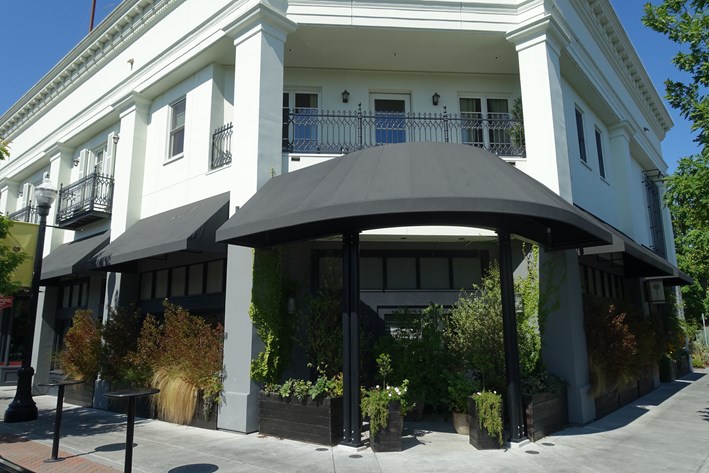

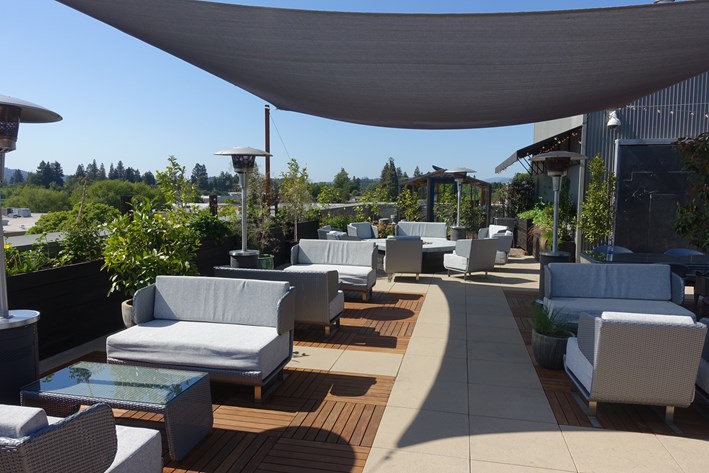

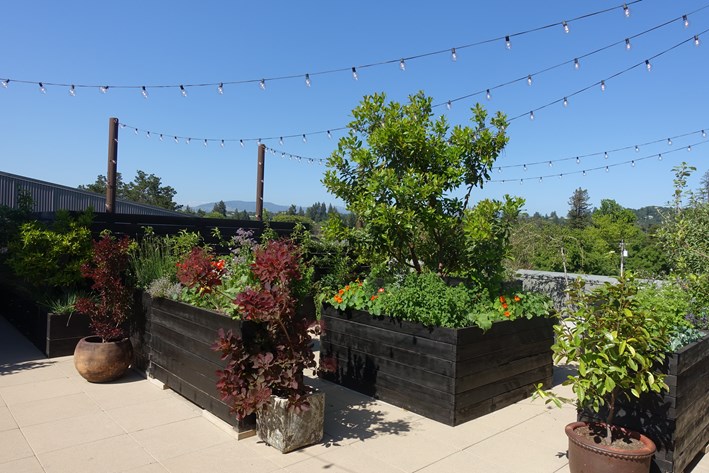
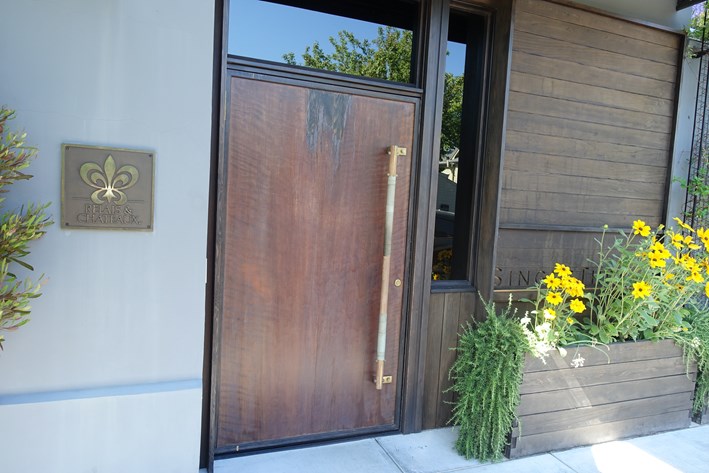
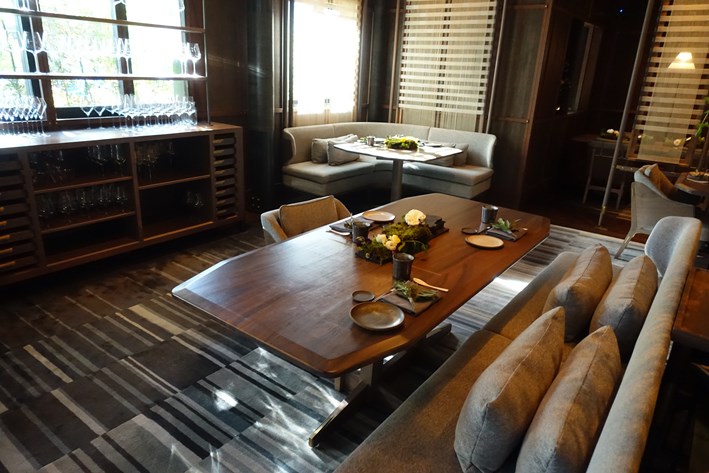
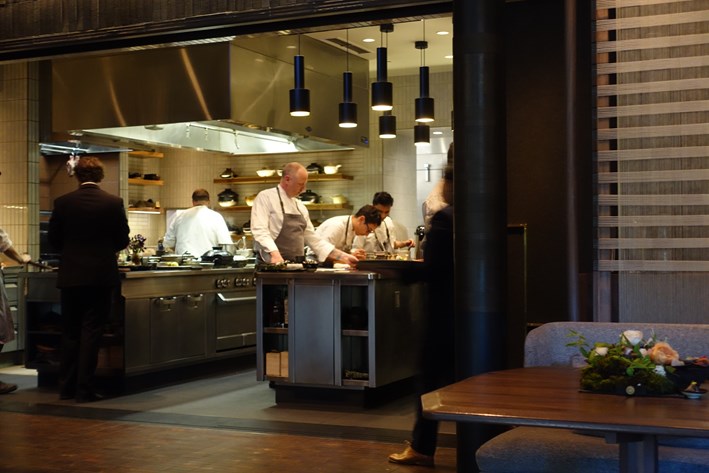

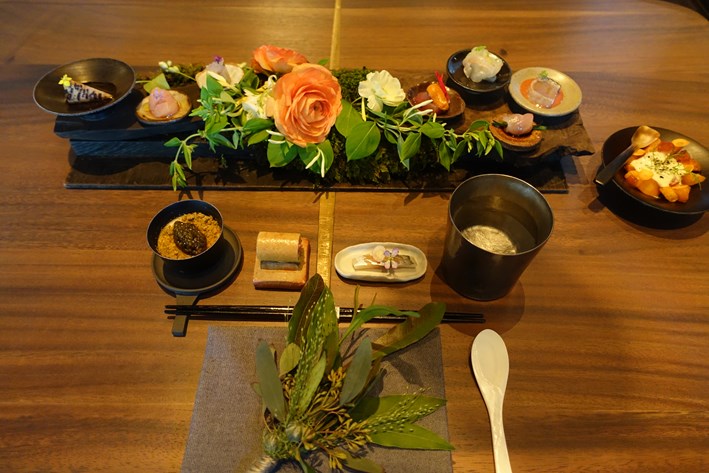
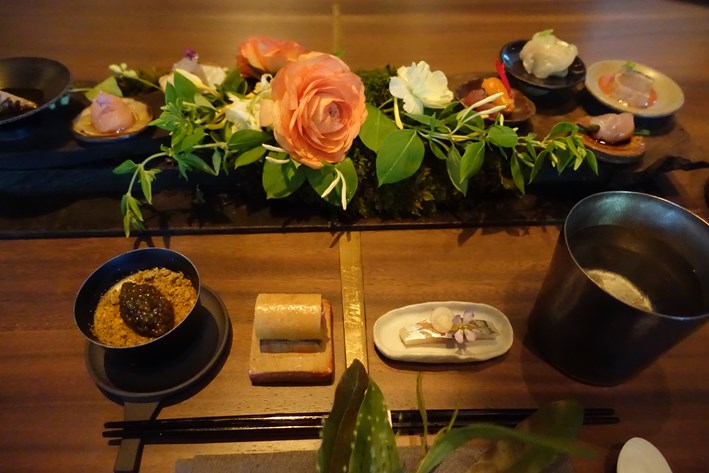
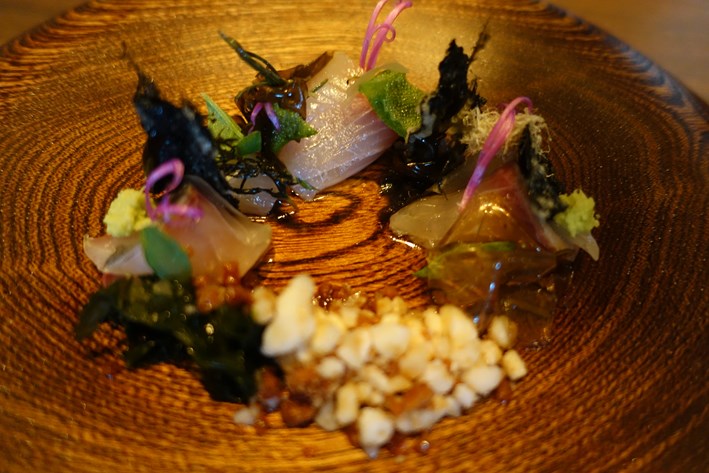
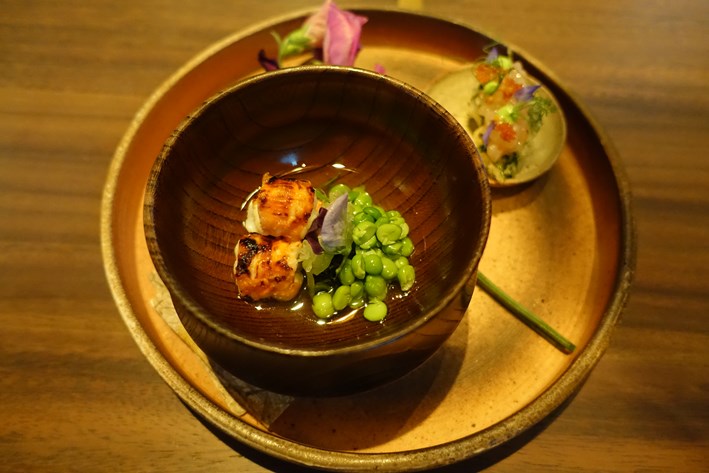
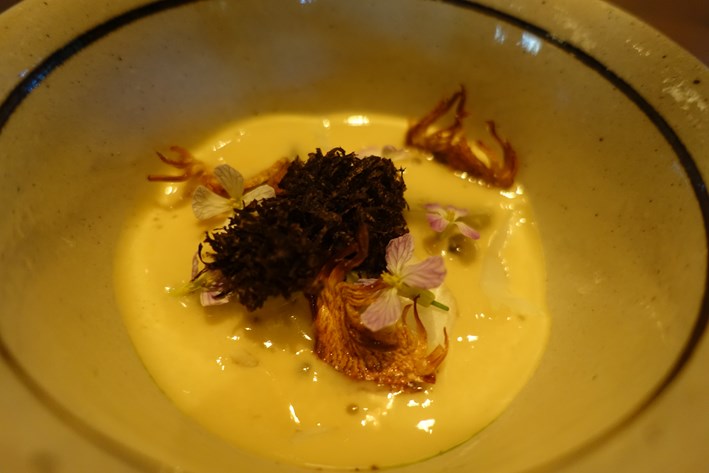

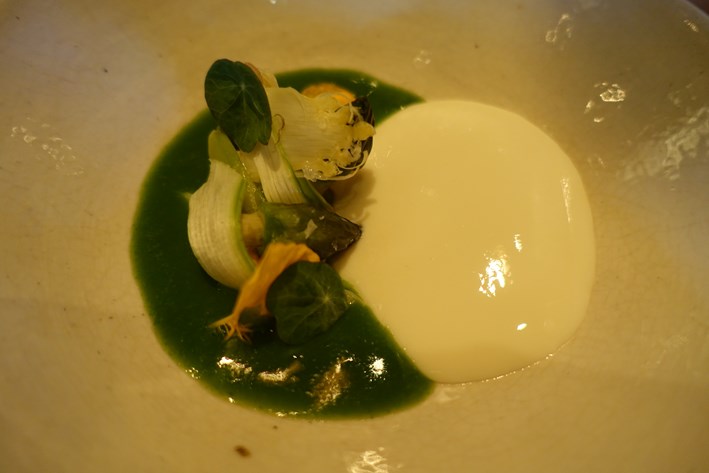
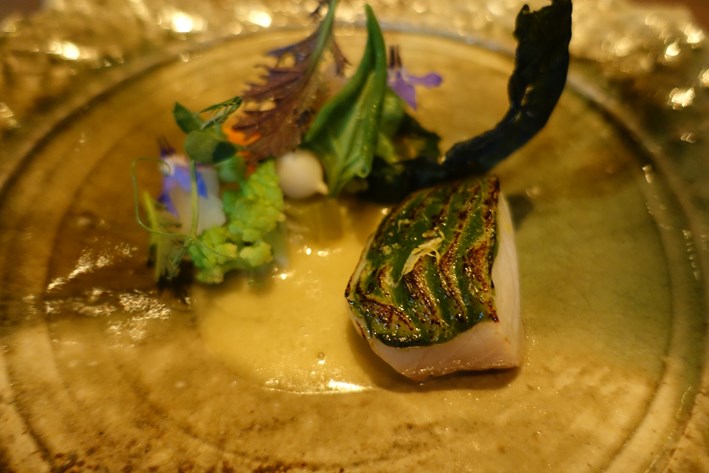
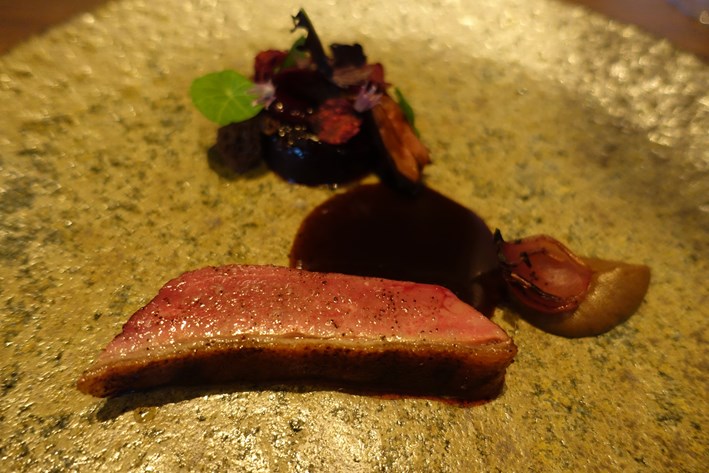
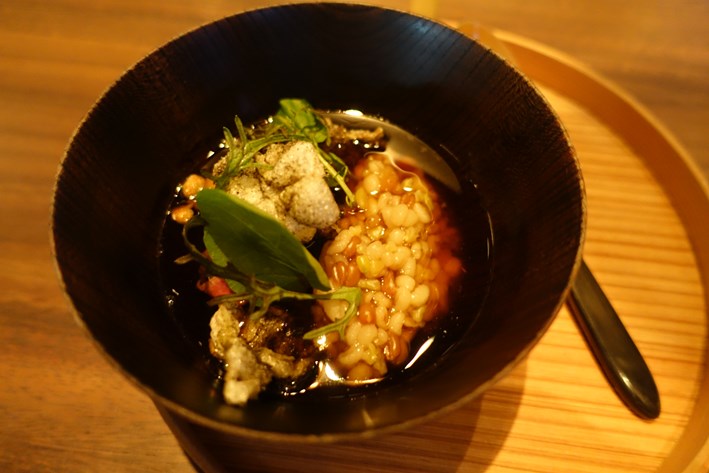
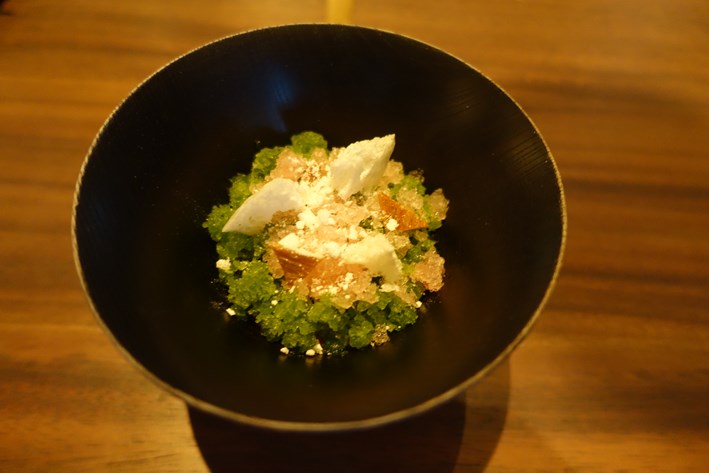

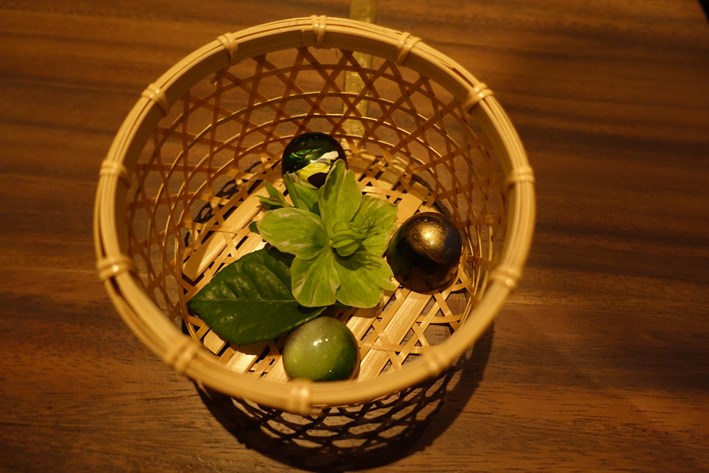
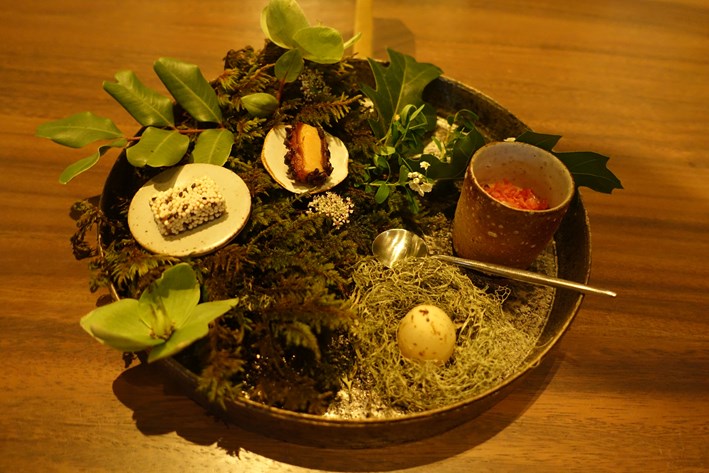
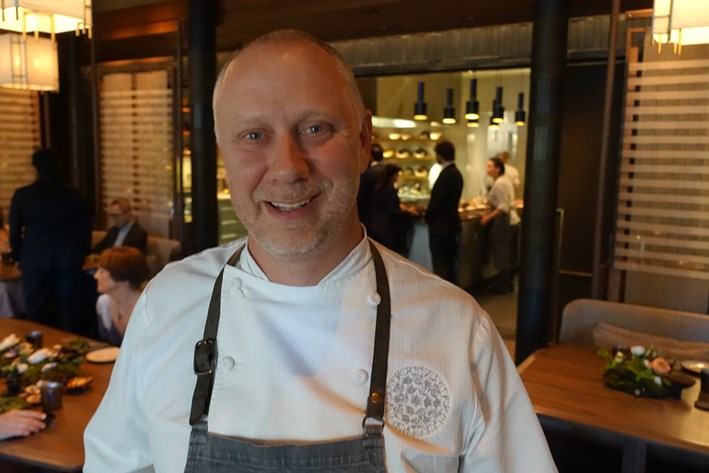

Add a comment
Thank you for submitting your comment, this will be checked and added to the website very soon.
User comments